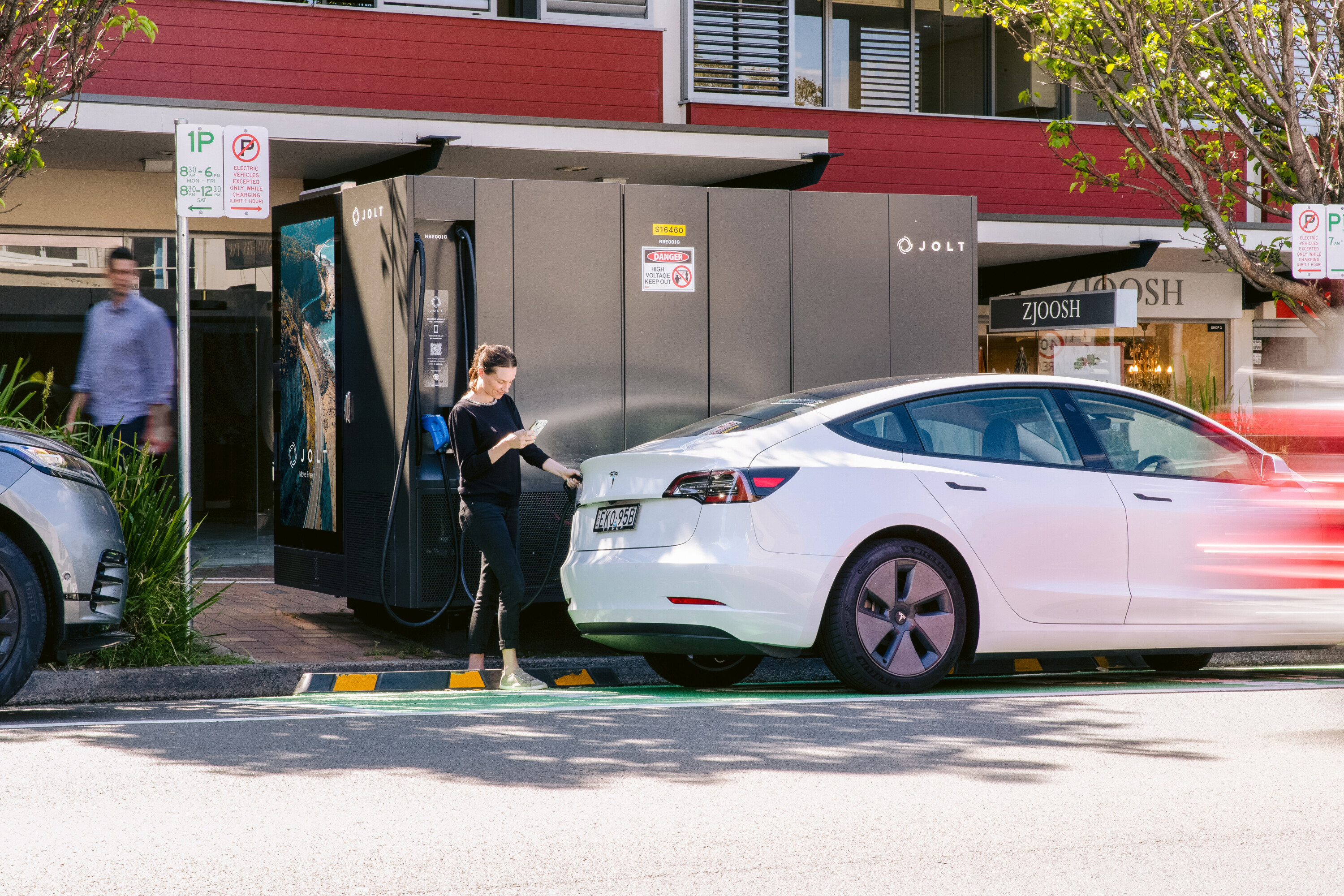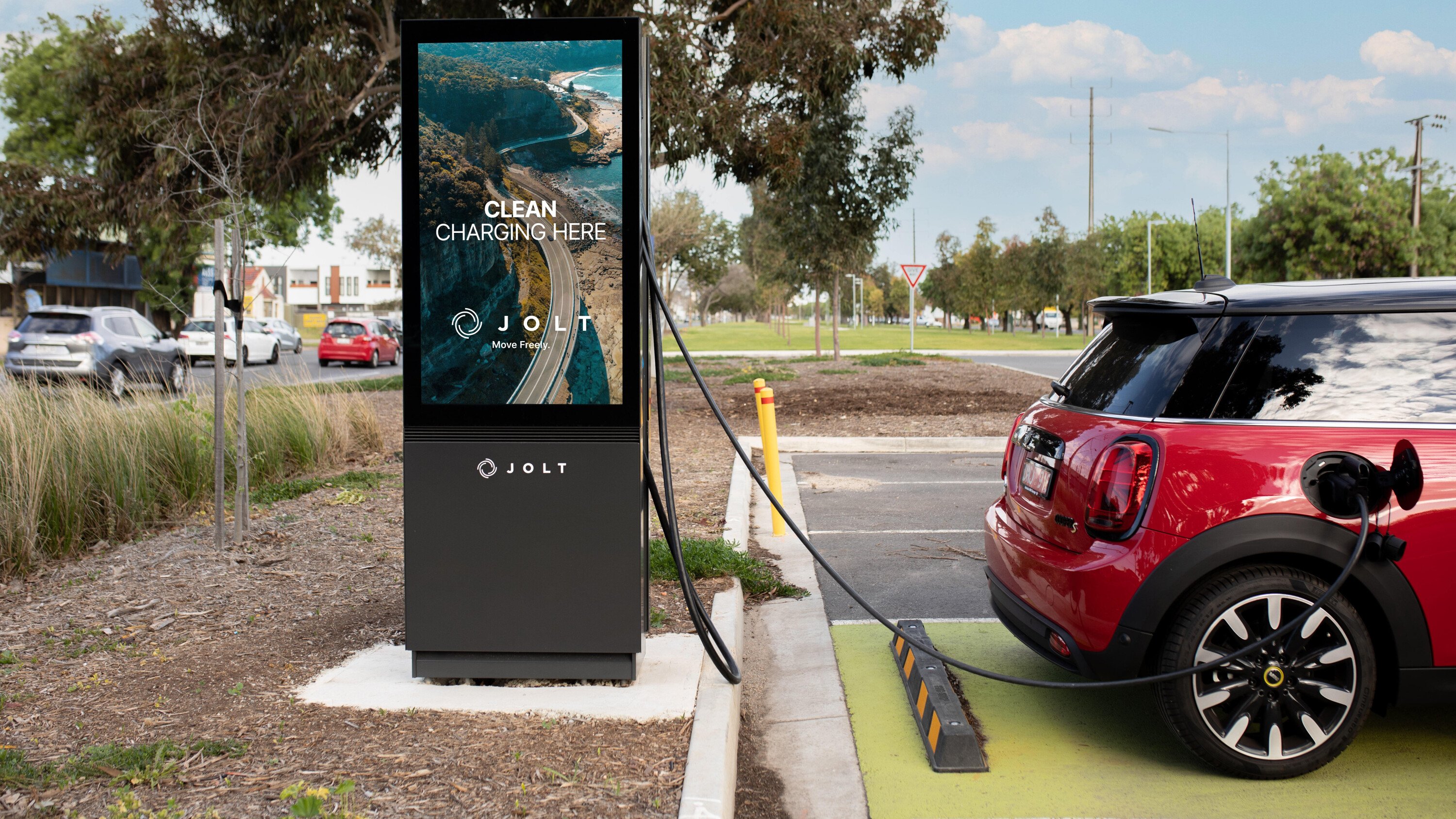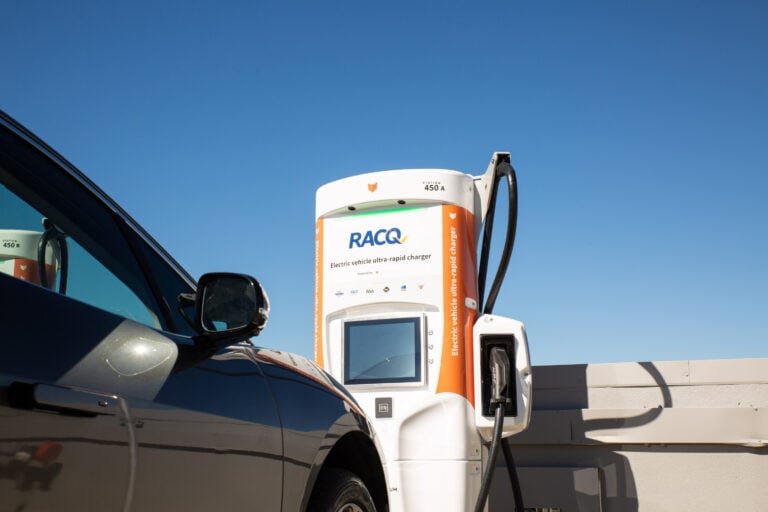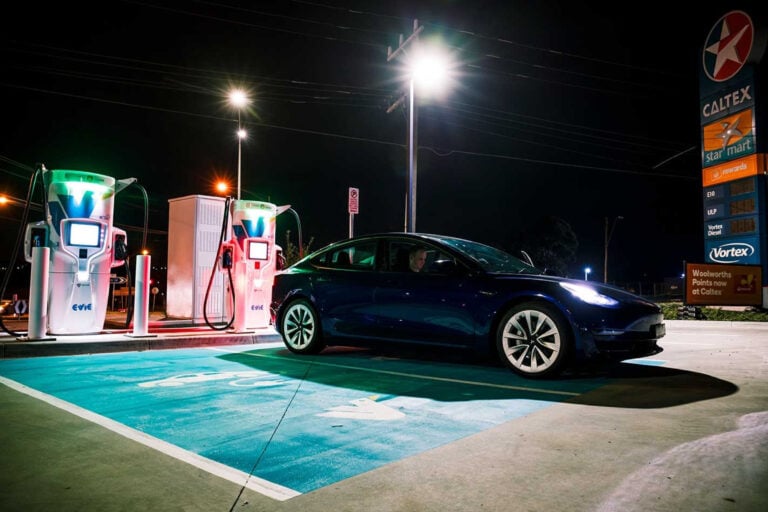
Snapshot
- Jolt concludes key learning lessons from 2.5-year Arena trial
- High-visibility charging bays, longer cables, wheel stops needed
- Good design can improve etiquette and reliability
Australian electric vehicle charge point operator Jolt has outlined key lessons in designing effective public charging infrastructure.
The study was part of a two-and-a-half year $2 million trial – with almost half co-funded by the Australian Government’s Australian Renewable Energy Agency (Arena) – involving installing 21 public EV charging stations in South Australia.
According to Jolt [PDF ↗], a number of good design measures can improve user satisfaction, EV charging etiquette, and reliability.

⚡ Key lessons learned
- High-visibility marked and painted EV charging bays – there was a “significant decline” in internal combustion engine (ICE) vehicles erroneously occupying the designated spaces, compared to only using council-erected signs
- Longer cables – varying EV model charge port placements and driver parking behaviour resulted in the original four-metre cables being upgraded to seven-metre units in order to reach vehicles
- Wheel stops – helped prevent collisions with charging equipment and improved alignment with the charging station
- Remote monitoring – allowed Jolt to check its network performance, conduct diagnosis and maintenance, and improve its services such as predicting peak demand periods which “offers opportunities to integrate renewable energy sources”
- Customer service – providing customers with information, such as frequently asked questions, troubleshooting instructions, and how-to videos reduced the number of customer support contacts
Some Tesla Supercharging locations in Australia have removed the wheel stops instead in order for its short-cabled V2 and V3 stalls to reach non-Tesla EV models at select sites, but is expanding its latest V4 model globally with longer cables.
Jolt has deployed public 25kW and 50kW DC fast charging stations across Adelaide, Melbourne, Sydney, and Brisbane.
It uniquely converts some streetside electricity power boxes and displays digital advertising to offer free charging for the first seven kilowatt-hours (kWh) per day.
We recommend
-
 Advice
AdviceWhy are EV chargers unreliable?
Faulty public EV charging stations have been the angst for many critics in the media. Here’s why and what’s being done
-
 News
NewsInterview: Chargefox chief discusses EV charging problems & promised improvements
Australia’s largest public EV charging network has developed a poor reputation with complaints by users and the media. WhichCar spoke to the Chargefox CEO to address the critics, accusations and misconceptions
-
 Advice
AdviceAre there enough EV chargers in Australia? Here's your guide
Public EV charging networks are expanding, but there still aren’t enough today. Does that mean you shouldn’t buy an EV?




